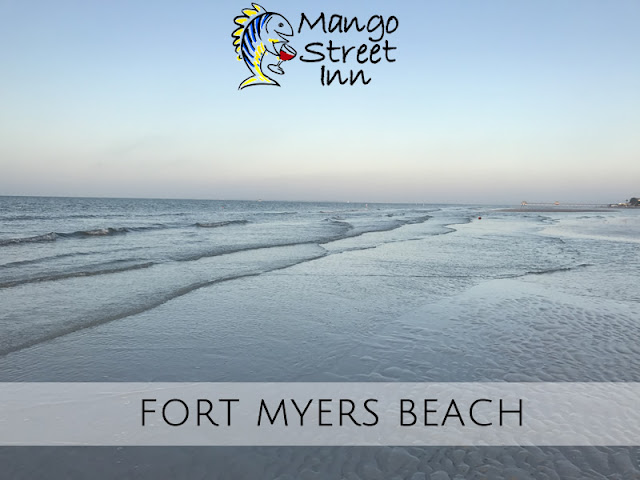7 Fascinating Facts About Sand Dollars
One of the most popular shells at Fort Myers Beach is the Sand Dollar!
Live Sand Dollars are plentiful in the waters of Fort Myers Beach and are beautiful too look at during low tide. Locals and tourists alike enjoy walking the beach in the mornings looking for Sand Dollar skeletons (dead Sand Dollars) to add to their shell collections. Because they are so popular, we thought you might enjoy learning a bit more about these lovely sea creatures. When you stay with us at Mango Street Inn, you're sure to see a lot of them!In this week's blog we highlight 7 fascinating facts you probably never knew about Sand Dollars.
- Sand Dollars are a Type of Sea Urchin
Sand Dollars are a type of Sea Urchin, only instead of long pointy spines, Sand Dollars have short spines on the outside of their shells that are covered in very small hairs. They are frequently found together due to their preference for soft bottom areas (convenient for reproduction). - Folklore & Legend Represents Sand Dollars as Mythical Coins
Legend has it that Sand Dollars are coins lost by mermaids or the people of Atlantis. Hokey, we know, but a fun little story to tell! - You Can Tell the Age of a Sand Dollar
Much like a tree, you can tell the age of a Sand Dollar by counting the rings in the exoskeleton. Sand Dollars live an average of 6-10 years. - Sand Dollars Reproduce Through External Fertilization
The sexes are separate and they reproduce by spraying the sperm and the egg into the open water where the larvae come together through external fertilization. This generally happens May through July. - Larva of The Sand Dollar Can Clone Themselves
Scientists discovered Sand Dollar cloning to also be a self-defense mechanism. They also clone themselves as a response to favorable temperatures and plentiful food. - A Sand Dollar's Mouth is on the Bottom
The mouth of the Sand Dollar is located on the bottom of its body in the center of the "petal" pattern. Sand Dollars eat crustacean larvae, small copepods, diatoms, algae and detritus. And just in case you were curious, its anus is located in back, unlike other sea urchins where it's located on top. - Most Sand Dollars You See Along the Beach at Low Tide Are Alive
Since it's illegal to take living shells from the beach, it's important to know how to tell if a Sand Dollar is still alive. If you find a Sand Dollar on the beach that's not completely faded in color, hold it gently in the palm of your hand and look closely at the tiny spines. If they are moving, it is alive and should be placed back in the water. Sand Dollars lose these spines soon after they die.
It's no secret that Fort Myers Beach is one of the best shelling beaches in the country. If you haven't walked our beach, you're in for a treat! When you stay at Mango Street Inn, you are mere footsteps from the beautiful white sands of Fort Myers Beach. No need to purchase shelling supplies. We have plastic pails and small plastic shovels at the Inn that guests may use on their shelling excursions!
Book your reservation at Fort Myers Beach BEST Bed & Breakfast today!
We can't wait to see you!
CONTACT US







Comments
Post a Comment